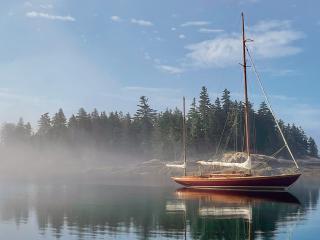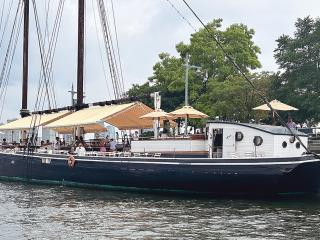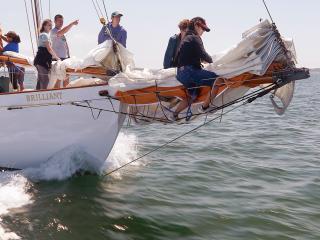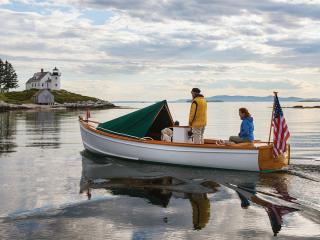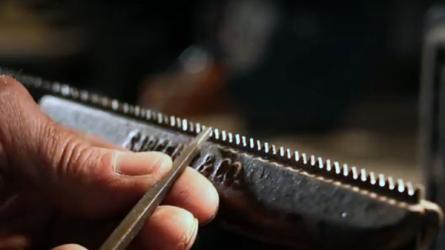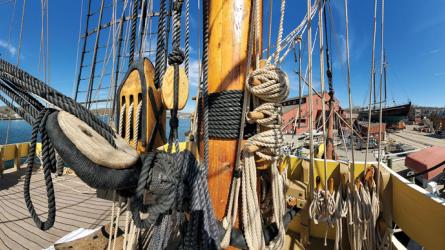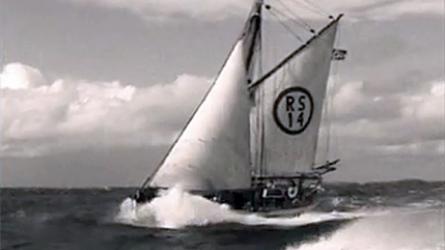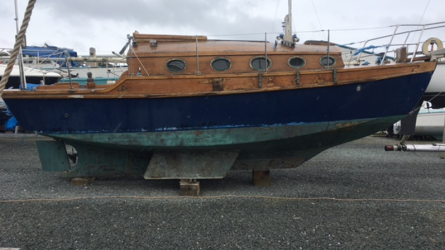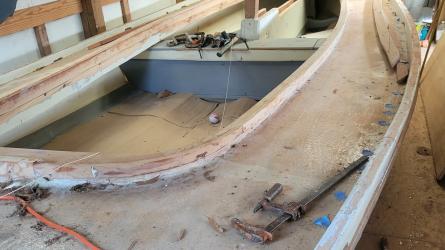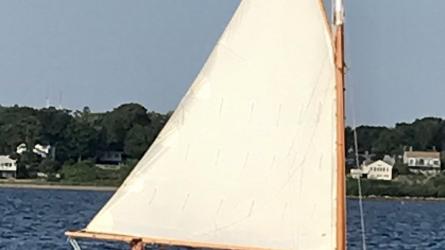November / December 2023
The International 14’s U.S. Debut
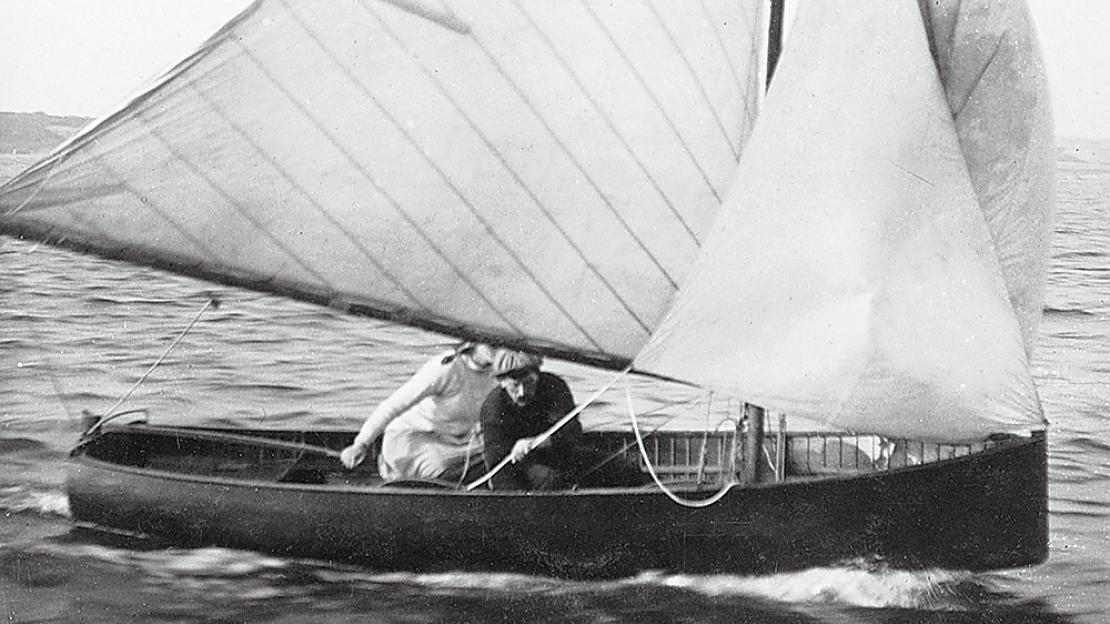
MORGAN GILES HERITAGE PROJECT
Ivy Carus-Wilson at the helm of her West of England Conference dinghy, MYOSOTIS. She wrote that her dinghy “simply picked herself up and flew, not through the water but over it. She scarcely seemed to touch it. She flew like a thing possessed.”
The introduction of the International 14 to the United States is often credited to the brilliant but rascally Uffa Fox in the 1930s, but this is untrue. The credit actually should go to Frank Morgan Giles (see sidebar) who, together with his friend George (E.G.) Martin, got the class off the ground through British Yachting Association meetings in 1923. Four years later, in 1927, Morgan Giles designed and built a one-design fleet of these 14-footers—then called the National 14—for the Larchmont Yacht Club in New York.
The International 14 is a development class, meaning that it encourages design innovation within a set of parameters. It evolved from small British wooden craft of late-19th-century Victorian times, and gained international status in 1928; there are now 14 fleets active worldwide. Today’s boats are sailed by crews of two, each on trapeze, and have asymmetrical spinnakers. The boats remain on the forefront of sailing technology, and since 2001 they have sailed with hydrofoils on their rudders. (Fully foiling hulls have been tested but are not allowed.) The class website describes them as “14 feet of carbon fiber and adrenaline.”
The first arrival of a fleet of these exquisite wooden 14-footers on U.S. shores in 1927 was the result of a particularly fertile time in the development of the sport of sailing internationally. It is entwined with the birth of the Royal Ocean Racing Club (RORC), and the American sailor J. Linton Rigg, who helped instigate the first Fastnet Race in 1925, seems to have played a significant role in the introduction of the class to the United States.
In autumn 1927, the journalist E.G. Martin wrote an article in Yachting World magazine about a fleet of “Fourteen footers” that had been shipped earlier that year to the Larchmont Yacht Club to kick-start the class in the United States. They had been designed and built by his friend and colleague Morgan Giles at his shipyard at Teignmouth in Devon, constructed to high specifications and with enormous care to ensure that each boat was identical to the others. All this had chiefly come about, wrote Martin, because of Rigg’s enthusiasm for England’s new National 14 class.
To read the rest of this article:
Click the button below to log into your Digital Issue Access account.
No digital access? Subscribe or upgrade to a WoodenBoat Digital Subscription and finish reading this article as well as every article we have published for the past 50-years.
ACCESS TO EXPERIENCE
2-for-1 Print & Digital Subscription Offer
For this holiday season, WoodenBoat is offering our best buy one, get one deal ever. Subscribe with a print & digital subscription for $42.95, and we’ll give you a FREE GIFT SUBSCRIPTION to share with someone special.
1 YEAR SUBSCRIPTION (6 ISSUES)
PLUS ACCESS TO MORE THAN 300 DIGITAL BACK ISSUES
PRINT+DIGITAL $42.95
Subscribe
To read articles from previous issues, you can purchase the issue at The WoodenBoat Store link below.
 Purchase this issue from
Purchase this issue from
